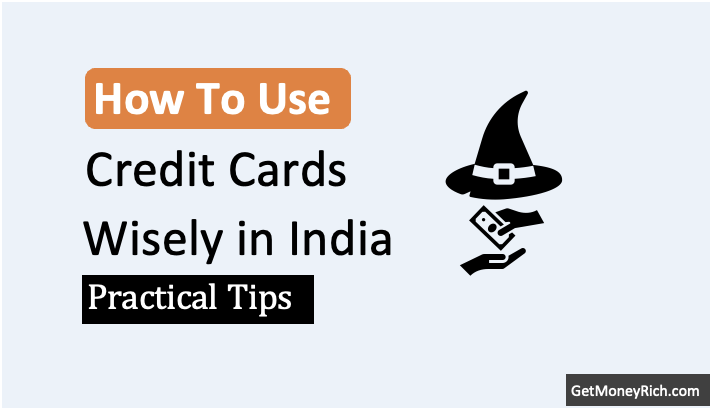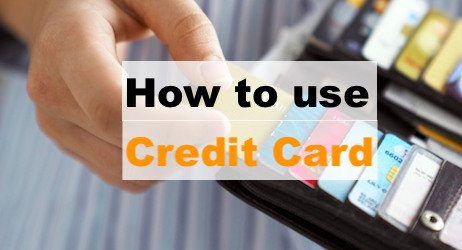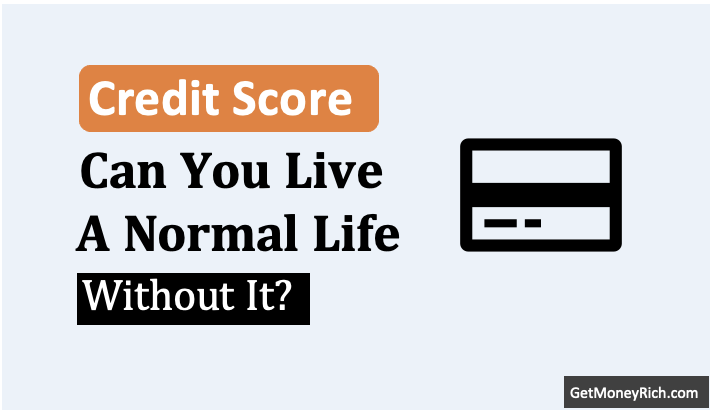Summary:
- This article guides young people with no credit history on building a credit score from zero, detailing the timeline, six months for a starter score, 12–18 months for a “good” score, and 18–36 months for an “excellent” score—while sharing practical hacks and common pitfalls to avoid.
Introduction
Recently I got an email from one of my young reader. He has just come out of the university and is doing a job in Bangalore. As any young adult, he too wanted to have a credit card of his own. So he applied and his request got rejected. The rejection note said nothing, but on insistence he was told verbally that because he does not have a credit history, hence no card. So the person has asked me, how long does it take for a person like him to build credit from zero?
[Note: Read this blog post as if it is my email written to the person who has asked me the question.]
Since he had no credit history, meaning your credit score is essentially zero. This is totally normal for young adults like him starting from scratch.
Let’s now talk about how long it’ll take to build your credit from zero and what one can do to get there.
Table of Contents
1. Why Credit History Matters?
First things first, let’s talk about why this credit thing is such a big deal.
Your credit score is like a financial report card. It tells banks and lenders whether you’re trustworthy with borrowed money.
The most common score comes from CIBIL, though other bureaus like Experian and Equifax are also used.
Your score ranges from 300 to 900, and anything above 700 is considered decent.
But there is a catch here. If you’ve never had a loan or credit card, your score doesn’t exist. It’s not even 300, it’s just a blank slate, often shown as “–1” or “0” on reports.
Without a credit history, banks don’t know if you’re reliable.
You can think about it like this. You are the manager of a bank and a person has applied for a credit card. You do not know anything about the person. What you will ask in such a scenario, “Who are you, and why should we trust you?” Bank’s are not sure if they can lend to a person whom they do not know.
That’s what happened to the person who sent me the email. When he tried applying for a card right after college. He was earning a good salary, but with no credit history, he got rejected.
It’s frustrating, but it’s how the system works. So, how do you go from zero to a score that opens doors?
Let’s break it down.
2. The First Step – Get Yourself On The Credit Radar
Your credit journey starts the moment you take on a credit product, like a credit card or a small personal loan.
Lenders report your payment activity to credit bureaus, but it takes time for this to translate into a score.
Typically, you need at least six months of active credit use before a numeric score shows up. Until then, your CIBIL report might still say “insufficient history.”
I learned this the hard way when I got my first credit card and eagerly checked my score after three months, only to see a big fat zero.
What happens in those first six months?
Well, every time you make a payment on time or use your card responsibly, it gets recorded. Think of it like planting a seed. You’re not going to see a tree overnight, but with regular care, it’ll grow.
The key is to start small and be consistent.
- Pay your bills on time, every time.
- Keep your card usage low, experts suggest using less than 30% of your credit limit. For example, if your card has a Rs.50,000 limit, try not to spend more than Rs15,000 in a month.
This shows banks you’re not maxing out your card, which means, you income and expense balance is good enough and you do not have to dig into loans everytime. This is a good pointer for credit rating agencies. They like such people.
3. The Six-Month Mark (First Scores Are In)
After six months of disciplined credit use, you’ll likely see your first score.
For most young people, this score lands somewhere between 600 and 650. It’s not amazing, but it’s a start.
I remember my cousin checking her score after six months of using a secured credit card. She was thrilled to see 620 pop up. It wasn’t enough for a fancy card with airport lounge access, but it meant she was finally on the map.
At this stage, banks might start offering you basic credit cards or small loans, but don’t expect high credit limits. You’re still proving yourself.
If you keep up the good habits, paying on time, keeping balances low, your score will inch up.
But here’s something else to take care at this stage. Don’t apply for too many cards or loans at once. Each application triggers a “hard inquiry” on your credit report, which can lower your score slightly.
I made this mistake early on, applying for three cards in a month, thinking it would speed things up. But it infact lowered my credit score.
4. Crossing the One-Year Mark
If you’ve been consistent, your score might climb into the 650–700 range.
This is what banks call “good” territory. At this point, you’re no longer a complete newbie. You might qualify for mainstream credit cards with better rewards or higher limits.
I remember of my friend Sanjay, who works in Pune. He got his first unsecured credit card after 14 months of using a secured card. His score was 680, and he was approved for a card with a Rs.70,000 credit limit. When he got this card, he was more than happy.
So, what’s happening behind the scenes? Let’s understand it:
- Your credit report is starting to show a pattern of reliability.
- The longer you maintain active accounts, the better your “credit age” looks.
- This is why it’s important to keep your first card active, even if you get a better one later.
- Closing old accounts can shorten your credit history, which isn’t great for your score.
- Also, try to avoid carrying a balance month to month. Paying your full bill each month shows you’re not desperate for credit, which banks love.
5. The 18–36 Month Journey
If you’re patient and disciplined, your score can hit the “very good” (700+) or even “excellent” (750+) range after 18 to 36 months. This is where the magic actually begins to happen in terms of you becoming credit bureau’s favourite.
With a score above 750, you’re in the top tier. Banks will roll out the red carpet, higher limits, premium cards, better loan terms.
I know a colleague who reached 760 after two years of careful credit use. She was offered a premium card with zero annual fees and a Rs.3 lakh limit. Later, I heard from her that her credit limit is now Rs.7,50,000.
Reaching this level takes time because credit scores reward long-term behavior. The older your accounts, the more stable you appear.
For young people, mixing different types of credit, like a credit card and a small personal loan, can also help.
But don’t overdo it, too much debt can backfire. My advice? One or two well-managed accounts are better than a dozen cards you can’t keep track of.
6. Smart Hacks for Beginners (With Zero Credit History)
Building credit from scratch can feel slow, but there are ways to hit the fast-forward button. I’am talking about a person who has no credit history. What such people can do to qualify for a loan or a credit card?
Hack #1: Secure Credit Card
One option is a secured credit card. These cards are backed by a fixed deposit. This way, the banks take on virtually no risk. You deposit, say, Rs.20,000, and get a card with a similar limit.
Your payments are reported to credit bureaus, so you’re building history without needing a prior score.
I recommended this to my younger collegue, and he got a secured card from HDFC Bank within next 3 months.
Hack #2: Add-on Card
Another trick is becoming an add-on cardholder. If your parents or a sibling have a credit card with a good track record, ask them to add you to their account. You’ll get your own card, but their payment history boosts your score.
My friend Neha did this with her mom’s card and saw her score jump to 650 in just eight months. It’s like getting a head start in a race.
Hack #3: Salary Account Offer
If you have a salary account with a bank like HDFC, ICICI, or Axis, talk to them. Some banks offer starter credit cards to young professionals with steady incomes, even if their credit history is thin.
Just make sure you’re with a reputed employer, as banks often check this. You can also ask your company’s HR or Finance Manager, he can also put in a word to the bank who handles your company’s salaries.
The above three options can help you get on the credit ladder sooner, but the golden rule remains: pay on time, every time.
7. Avoid These Mistakes
Now, let’s talk about what not to do.
- One big no-no is missing payments. Even one late payment can lower your score drastically, and it stays on your report for years. Set reminders or automate your payments to avoid this.
- Another mistake is using too much of your credit limit. I once swiped my card for a big purchase, hitting 80% of my limit. My score took a hit the next month, and I learned my lesson.
- Also, be wary of applying for credit too often. Each application shows up as an inquiry, and too many inquiries make you look desperate.
- Lastly, don’t ignore your credit report. Check it once a year through CIBIL or Experian to spot errors. Though it is rare, but you never know a good step from your part is looking like something else in your credit report.
Conclusion
Building credit from zero is like a slow race where you will cover a kilometer slowly, step by step.
For most young Indians, it takes six months to get a starter score, 12–18 months to reach “good” territory, and 18–36 months to hit “excellent.”
That might sound like a long time, but think of it as an investment. A strong credit score opens doors to better financial products, lower interest rates, and even future goals like buying a car or a home.
I’ll leave you with a story.
My neighbor Rahul started with a secured card at 23. He was disciplined, kept his usage low, and paid on time. By 25, his score was 780, and he got a car loan at a great rate. Today, he’s 28, owns his car outright, and is saving for a house.
That’s the power of starting early and staying consistent. So, if you’re a young adult wondering where to begin, take that first step.
Get a secure credit card (see hack #1 – above), use it wisely, and watch your credit grow.
Have a healthy credit life.






